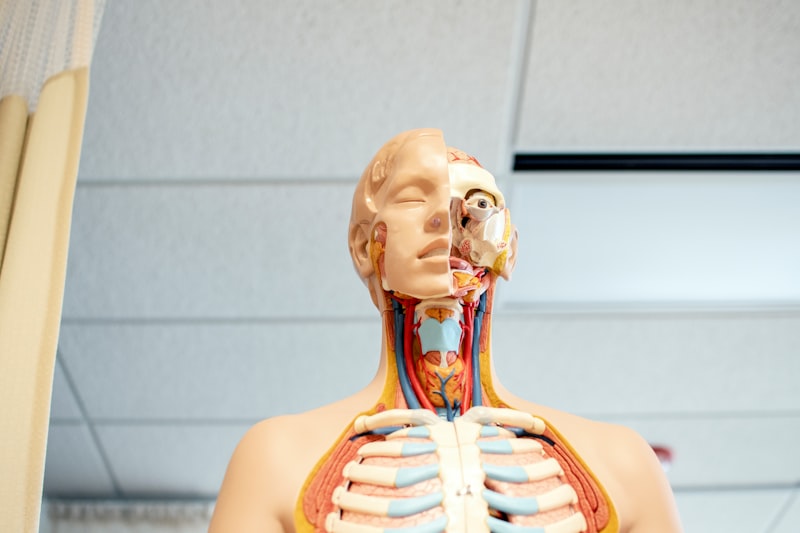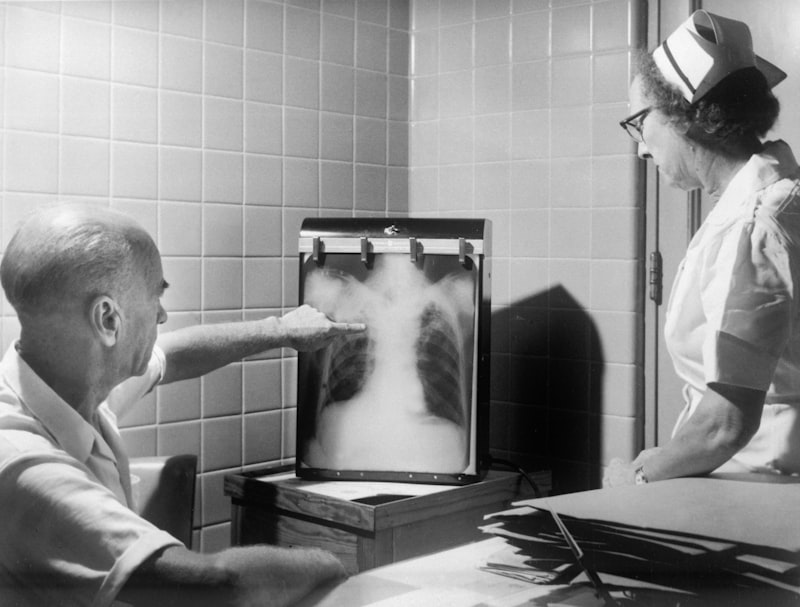Have you ever wondered how yoga can boost your lung capacity? Yoga isn’t just about stretching or relaxation; it’s a powerful tool that can enhance your respiratory health in surprising ways. One of the standout benefits of practicing yoga is its positive impact on lung function and capacity.
Yoga promotes deep breathing techniques that can significantly improve how efficiently your lungs operate. Through practices like pranayama (breath control), yoga encourages you to take slower, deeper breaths. This not only strengthens the respiratory muscles but also expands the lungs’ capacity to take in more oxygen with each breath. It’s like giving your lungs a rejuvenating workout session!
Moreover, certain yoga poses are specifically designed to open up the chest and increase lung capacity. Poses such as Bhujangasana (Cobra Pose) or Dhanurasana (Bow Pose) stretch and expand the chest muscles, allowing for deeper inhalation and exhalation. Imagine your lungs expanding like balloons, effortlessly taking in more air and releasing any stale air trapped within.
Beyond the physical aspects, yoga also teaches mindfulness and relaxation techniques. Stress and tension can constrict the muscles around the chest and limit breathing capacity. By practicing yoga regularly, you can reduce stress levels and learn to breathe more deeply and calmly even in challenging situations.
Whether you’re a seasoned yogi or just starting out, the benefits of yoga for improving lung capacity are clear. It’s not just about flexibility or inner peace; it’s about empowering your respiratory system to function at its best. So, next time you roll out your yoga mat, remember that each pose and breath you take is contributing to healthier, stronger lungs.
Breathing New Life: Yoga’s Surprising Impact on Lung Capacity

Yoga isn’t just about touching your toes or doing the perfect downward dog. It’s about harnessing the power of your breath to foster holistic well-being. When you practice yoga, whether it’s the calming effects of Pranayama or the dynamic movements of Vinyasa flow, you engage in deep, intentional breathing. This focused breathing pattern not only calms the mind but also strengthens the lungs.

The deep breathing techniques in yoga help expand the lung capacity over time. Think of it like gradually increasing the size of your lungs’ ‘reservoir’. As you inhale deeply and exhale fully during yoga practice, you’re training your respiratory muscles to work more efficiently. This can lead to improved oxygen exchange, better circulation, and increased stamina.
For those with respiratory issues like asthma or COPD, yoga can be particularly beneficial. The controlled breathing exercises can help manage symptoms and improve quality of life. Over time, practitioners often find themselves less reliant on inhalers or medications as their lung function improves through regular practice.
Moreover, yoga teaches us to be mindful of our breath throughout the day, not just on the mat. This mindfulness carries over into everyday activities, promoting healthier breathing habits in all aspects of life. It’s like giving your lungs a fitness regimen that extends beyond the gym.
In essence, yoga’s impact on lung capacity goes beyond flexibility and relaxation—it’s about nurturing a vital aspect of your health through intentional breathwork. Whether you’re a seasoned yogi or a beginner, the journey to better lung health begins with that first mindful inhale and extends to a lifetime of deeper, more fulfilling breaths.
Unlocking Vitality: How Yoga Enhances Lung Function and Fitness
One of the key components of yoga is conscious breathing, often referred to as pranayama. Through specific techniques like deep belly breathing or alternate nostril breathing, yogis learn to expand their lung capacity and improve respiratory efficiency. It’s like upgrading from a regular fuel tank to a high-performance one – you can store more oxygen and release carbon dioxide more effectively.
Additionally, yoga postures or asanas play a significant role. Poses like Cobra Pose (Bhujangasana) or Bridge Pose (Setu Bandhasana) not only stretch and strengthen the muscles around the chest and lungs but also improve posture. This, in turn, allows for better lung expansion and deeper breathing. It’s akin to giving your lungs more room to breathe, like opening up windows in a stuffy room to let in fresh air.
Moreover, the rhythmic nature of yoga sequences synchronizes movement with breath. Flowing through sequences like Sun Salutations (Surya Namaskar) or Warrior Poses (Virabhadrasana) increases cardiovascular endurance and stamina. Picture your body as a finely tuned instrument – yoga helps harmonize its functions, ensuring each part works in perfect synergy.
Beyond physical movements, yoga’s relaxation techniques reduce stress and anxiety. Stress constricts blood vessels and tightens muscles, including those used for breathing. By relaxing these tensions through practices like guided meditation or Yoga Nidra, yoga restores natural breathing patterns and enhances overall respiratory health.
Breathe Deep: Yoga Poses That Boost Lung Capacity and Health
Breathing deeply isn’t just about filling your lungs—it’s about enhancing your health and vitality. Yoga, with its rich tapestry of poses and practices, offers a profound way to boost lung capacity and overall well-being. Let’s delve into some key yoga poses that can help you breathe easier and cultivate stronger lungs.
Before diving into specific poses, mastering deep belly breathing sets the foundation. This technique involves breathing deeply into your diaphragm, allowing your lungs to fully expand. It not only increases oxygen intake but also relaxes the body, reducing stress levels and promoting better lung function.
Picture a bridge arching gracefully over a flowing river. Similarly, Bridge Pose creates an arch with your body, opening up the chest and lungs. As you lift your hips and chest, you stretch the muscles around your lungs, enhancing their capacity to expand and contract more efficiently.
This dynamic duo of poses mimics the movements of a cat stretching and arching its back. Cat Pose (Marjaryasana) involves rounding your spine and contracting your chest, while Cow Pose (Bitilasana) extends the spine and opens the chest. Alternating between these poses massages the lungs and improves breathing patterns.
Imagine a cobra gracefully rising, ready to strike—it’s a perfect analogy for Cobra Pose. As you lift your chest off the ground, you not only strengthen your back muscles but also expand your chest cavity. This expansion allows for deeper breaths, improving lung elasticity and capacity.
While not a pose per se, Pranayama techniques are fundamental in yoga for controlling and extending the breath. Practices like Ujjayi Pranayama (Victorious Breath) and Kapalabhati (Skull Shining Breath) enhance lung capacity, purify the respiratory system, and increase oxygen flow throughout the body.
By incorporating these yoga poses into your practice, you can significantly boost your lung health and overall well-being. Whether you’re a beginner or a seasoned yogi, the benefits of these poses extend beyond physical fitness—they promote mental clarity, reduce stress, and cultivate a deeper connection between body and mind.
Ready to take a deep breath and start your journey towards better lung health? Give these poses a try and feel the transformative power of yoga unfold in your life.
Beyond Stretching: Yoga’s Role in Strengthening Respiratory Power
Have you ever considered yoga to be more than just stretching? Think of it as a journey that not only flexes your body but also strengthens something deeper—your respiratory power. Yes, you heard it right! Yoga isn’t just about touching your toes; it’s about enhancing the capacity of your lungs and improving your overall respiratory health.
When you flow through yoga poses, you engage in deep, mindful breathing. This intentional breathing technique is called pranayama, and it’s more than just inhaling and exhaling—it’s about harnessing the power of your breath. Imagine your lungs expanding like balloons, filling with fresh oxygen, and then gently releasing any tension or stale air. It’s a rejuvenating process that not only clears your mind but also revitalizes your body from within.
Research shows that regular practice of pranayama can significantly increase lung capacity and improve respiratory efficiency. This means you’re not only strengthening your respiratory muscles but also enhancing the efficiency of oxygen exchange in your body. It’s like giving your lungs a workout and training them to perform better, just like you would train your muscles in a gym.
Moreover, yoga poses themselves play a crucial role in enhancing respiratory power. Poses like the Cobra (Bhujangasana) or the Bridge (Setu Bandhasana) open up the chest area, allowing for deeper and more expansive breathing. As you hold these poses and focus on your breath, you’re training your respiratory system to expand its capacity and work more efficiently.
Think of your respiratory system as a powerful engine that drives your body. By practicing yoga regularly, you’re not just maintaining it—you’re fine-tuning it for peak performance. Just as athletes train to improve their endurance, yoga practitioners train their lungs to achieve optimal respiratory health.
So, the next time you roll out your yoga mat, remember that you’re not only stretching your muscles; you’re also strengthening your respiratory power. Embrace the breath, feel the flow, and let yoga take you beyond mere flexibility—into a realm where each breath fuels your vitality and well-being.
Yoga for Better Breathing: Techniques to Expand Lung Capacity
One of the fundamental principles of yoga is pranayama, or breath control. This ancient practice teaches us to regulate our breathing consciously, influencing the flow of prana (life force) within us. Through specific techniques like diaphragmatic breathing, also known as belly breathing, yoga encourages deep inhalations that fill the lungs completely. Imagine your lungs as balloons; with each breath, you inflate them fully, allowing oxygen to reach every corner.
A popular pranayama technique is Kapalabhati, often referred to as the “skull shining breath.” This involves rapid, forceful exhalations followed by passive inhalations, stimulating the respiratory system and clearing the mind. It’s like giving your lungs a revitalizing workout, purifying them with each cycle of breath.
Another beneficial practice is Anulom Vilom, or alternate nostril breathing. This technique balances the flow of energy between the left and right sides of the body, promoting harmony within. Picture it as a gentle dance of breath, where each inhale and exhale brings equilibrium and serenity.
For those looking to strengthen their lung capacity, Bhastrika pranayama—often called “bellows breath”—is highly effective. It involves rapid, forceful inhalations and exhalations, akin to the pumping of a bellows, enhancing the efficiency of oxygen intake and carbon dioxide expulsion.
Yoga also emphasizes the importance of mindful breathing throughout asanas (poses). Whether you’re in downward dog or seated in lotus position, maintaining a steady, controlled breath enhances the benefits of the posture, fostering deeper relaxation and focus.
Frequently Asked Questions
What are the best yoga poses for increasing lung capacity
Discover effective yoga poses that enhance lung capacity, promoting better breathing and overall respiratory health.
How does yoga improve lung capacity
Discover how yoga enhances lung capacity through specific breathing techniques and postures that strengthen respiratory muscles and improve oxygen utilization.
How often should I practice yoga to see improvements in lung function
To see improvements in lung function, practicing yoga at least three times a week is recommended. Regular practice helps enhance breathing techniques and overall respiratory efficiency.
Are there specific breathing techniques in yoga that enhance lung capacity
Discover effective yoga breathing techniques designed to enhance lung capacity. Learn how these practices can improve respiratory function and support overall well-being.
Can yoga help with respiratory conditions like asthma
Learn how yoga can potentially alleviate symptoms of respiratory conditions like asthma through controlled breathing techniques and gentle exercises aimed at improving lung function and reducing stress.


